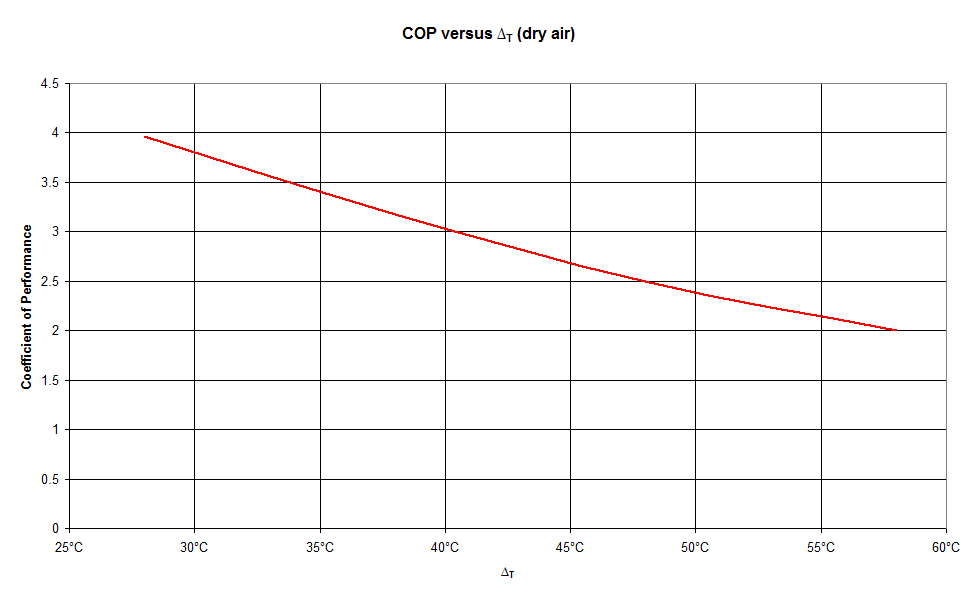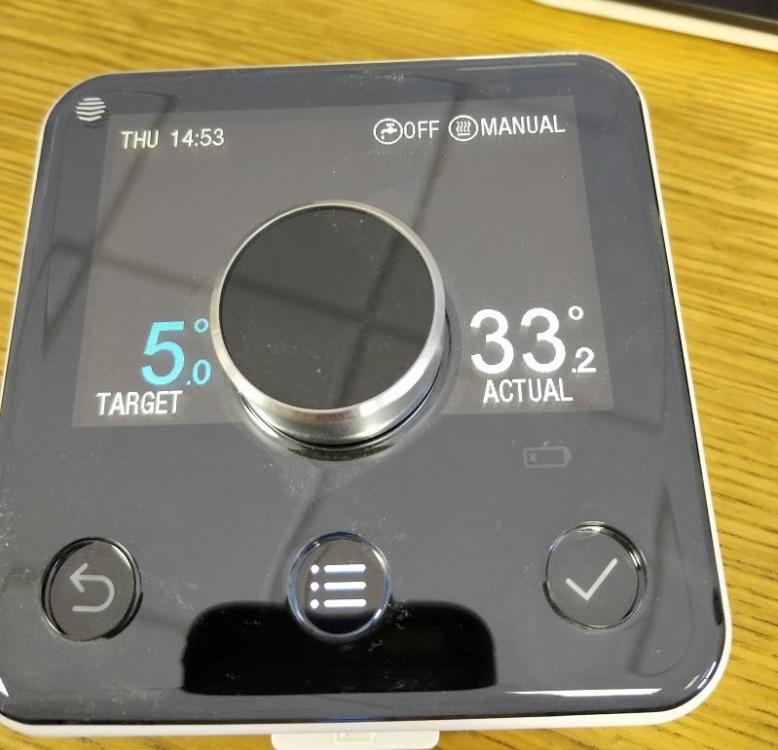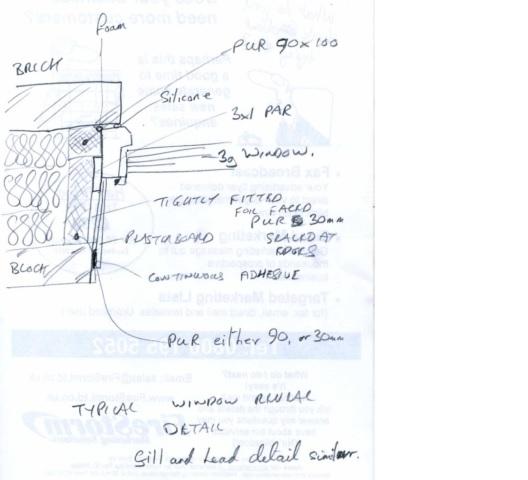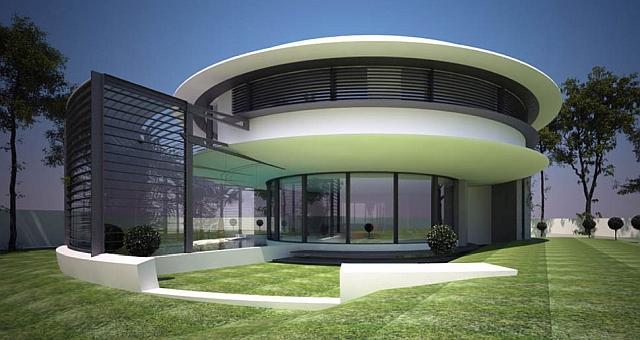Leaderboard
Popular Content
Showing content with the highest reputation on 07/25/19 in all areas
-
5 points
-
digger swings round and oops, sorry. we'll rebuild as it was with proper foundations. happens all the time.3 points
-
2 points
-
Current sea surface temperature at Penzance is 18.4°C That is both 20° too cold for swimming and 20° too North.2 points
-
2 points
-
1 point
-
I'm completely with @ProDave here. Nothing's changed. It used to be that there were two limits: 1) The 16 A/phase limit (3.68 kW, or even 3.84 kW, in practice) for maximum you could feed to the network without prior notification or cost. If you wanted to feed more than that you had to notify them and they could charge you for any network strengthening required. If your (and your neighbour's) inputs were all within the 16 amp limit and the result was an overvoltage (over 253 volts) then the DNO had to pay for the fix. This is defined in paragraph 22 of the The Electricity Safety, Quality and Continuity Regulations 2002. Whether the electricity comes from PV, wind, hydro, diesel, or whatever is irrelevant though the DNO could have a say in what equipment was used to ensure that the limit was obeyed. E.g., some DNOs allowed larger PV systems (both panels and inverters) combined with an appropriate diverter which limited the output to the network to less than 16 amps or 3.68 kW, others didn't. 2) The original FiT scheme had a big drop in pennies per kWh paid when the capacity of the PV panels went over 4kW such that there was a “dead band” from 4 kW up to somewhere around 6 kW when you didn't get more money even if you were feeding in more electricity. You could have, say, 8 kW of panels and get more money than somebody with 4 kW's worth but less than twice as much. Because these were similar limits lots of people got muddled between the two. The only thing that's changed is that 2 became progressively less important as the FiT rates dropped and the difference in rates decreased and the whole scheme has now gone away completely. AFAIK, nothing's changed with respect to the connection to the DNO (1, above).1 point
-
1 point
-
Back from appliances direct ... no sound of gouging but a bit of scrimmage. Several people demanding that they had been instructed to collect the air on they had ordered over the telephone. Yeah right. Temperature outside has been at 31.5C. Inside in the kitchen at about 27.3 at 65% RH. Opened skylights .. not a sausage on temp, but dropped RH by 10% quite sharpish. Experimenting with how good the Liebherr Supercool Function is when applied to a whole room. F1 point
-
1 point
-
The day has just kept getting hotter here. It seems to have peaked at 30 degrees which is VERY hot for up here. Still far far too hot to open the windows. 24 inside upstairs now. Pleasant 17 and sunny on Shetland, wish we were still there.1 point
-
Go to decathlon, get those large beach towels that you wear to get changed in. Soak in water, throw into the freezer for an hour. Prepare for shocking, but satisfying cold.1 point
-
1 point
-
Good point, it is easy to overlook ignorance as a factor. Sometimes it's easy to forget that heat pumps are relatively new to the UK and the knowledge of the way they work isn't that widely understood yet.1 point
-
Don't attribute to malice that which is adequately explained by ignorance. They may well believe what they said!1 point
-
36°C outside 25.5°C upstairs (interestingly, this is very slightly cooler than it was yesterday) Not sure about downstairs, as I don't have a working thermometer here (just brought the upstairs one downstairs and am letting it stabilise). It's a lot cooler than upstairs - I guess it's around 21-22°C, but feels cooler because I have my bare feet on the concrete floor. I'd be curious to know the floor temperature - must get my 1-wire system working again! When the kids come in from being out in warm weather, they walk in the front door and lie on the concrete in the hall to cool down.1 point
-
Not at all sure about the "negligible" bit, that doesn't really stand up to scrutiny at all well, and smacks of BS. There is certainly an efficiency difference between running an ASHP in warm weather versus cool weather, but not by a massive amount, and it certainly never gets anywhere near a state where the energy usage becomes negligible. Air at 30°C only contains about 3.4% more heat than air at 20°C, for example, and all heat pumps have a characteristic operating curve that gives the Coefficient of Performance (COP) versus the operating temperature differential (difference between the ambient air input temperature and the water flow temperature for an ASHP) for dry air (humidity has a couple of incidental effects on performance). This is the characteristic curve for our ASHP when operating with dry air, by way of example: There is clearly a reduction in the amount of electrical energy needed to heat a given volume of water as the COP increases, but it isn't as big a difference as to ever result in the amount of energy used being negligible. If you were heating a full tank of 300 litres of hot water to 55°C with an ASHP with the above efficiency curve and an incoming mains water temperature of 10°C, then the electrical energy usage for different ambient temperatures would be: At 10°C ambient = 5.2 kWh At 15°C ambient = 4.7 kWh At 20°C ambient = 4.2 kWh At 25°C ambient = 3.8 kWh It annoys me that suppliers think they can bamboozle customers like this, and it was exactly this sort of misrepresentation that resulted in there being so many unhappy ASHP owners in the early days of their introduction here. They were mis-sold on a fairly wide scale, enough for the Energy Saving Trust to recognise the problem when they conducted their first survey into the efficiently of heat pumps in the UK domestic sector.1 point
-
It would be a rare day in Scotland when it was warmer outside than in! But indeed when I am not at home no one does anything about opening windows at night to cool it down, or closing curtains to keep out some of the sun, or turning off lights, or... I could go on. If only there was some way to save this heat for the winter.1 point
-
1 point
-
Insane. As much as I like Wiltshire, I don't think I'll be moving there any time soon!1 point
-
Surely bypass mode will only work to cool a house when outside temperature is lower than inside? If it is hotter outside you will get that hotter air straight into the house. when it is really hot outside you want the MVHR in "heat recovery" mode. All the heat exchanger does is seeks to equalise incoming and outgoing temperature. so when it is hot outside, the incoming air will be cooled a little by the cooler outgoing air.1 point
-
1 point
-
1 point
-
Self build mortgages rates tend to be more expensive than a standard mortgage product in general so not really. It’s why people are generally keen to remortgage as soon as they complete the build. The banking crisis was in part caused by banks offering very large mortgages that became unaffordable and with falling property prices many defaulted. This led to much stricter regulation in the banking industry and lenders are much less likely to abandon salary multipliers for someone with a low salary. If you were in a professional job with the expectation that your salary should increase rapidly in the near term there are specialist lenders that will look at offering higher salary multipliers but I doubt that you’d find that in the self build market.1 point
-
That depends on your salary and credit rartng. I got a pretty low £3200 credit limit but because the only sensible way to transfer the balance is by balance transfer I am limited just to transferring our normal credit card bills as they come in. The transfer window of 60 days might run out before I have transferred up to the credit limit. You can do it as a cash advance, but then a 5% fee applies and it is only 0% for 20 months, so not such a good deal.1 point
-
I think Jeremy did the calculations and the difference is only a few % in the heat capacity of air over the range we are talking about. so I am sure the HP will run at a better COP just now, but the saving by running it instead on the off peak rate will be greater. Mine topped up the tank today powered by the PV with no import. Mine only comes on after 11AM to maximise the chance of enough PV generation to run it.1 point
-
That is how the new export payment scheme will work. you first have to get a smart meter then the smart meter will record import and charge it at your normal rate and separately meter export and pay it at the much lower export rate. Currently as far as I know, Octopus are the only ones to introduce this on a trial basis and are paying 5.5p per KWh exported.1 point
-
cache:https://www.insidehousing.co.uk/insight/insight/an-inspector-falls-what-the-building-control-insurance-crisis-means-for-the-housing-sector-62279 (sorry: does not seem to work. Put this into Google search, and the direct link should allow you to see: "A large building inspection firm has filed for liquidation. Luke Barratt explains what it means for those involved in building new homes." ) F1 point
-
I think the issue is the previous FIT system may have imposed limits on actual panel capacity when claiming the FIT, but that is gone and any such limits gone with it. We now only have to satisfy G98 (or G99 for larger systems) and unless someone can find to the contrary, I believe that is only concerned with maximum current.1 point
-
We use the Genvex Combi 185LS to heat the DHW to 45C which seems to be very efficient. There are only two of us but being retired we are at home most of the time. As Jeremy said we bought ours from Denmark and IIRC saved over £3000 and still reclaimed the higher VAT rate. The only downside to that is, if there is a fault with it, the supplier wants it returned to Denmark for repair. Of course there maybe the Brexit effect after October.1 point
-
Shame Would take 90% of the guesswork out of it.1 point
-
1 point
-
Re sizing, First ask your DNO what they will allow you to connect. Up to what is generally referred to as a "4KW" system (actually the inverter output is limited to 16A or about 3.68KW) you can connect without prior notification but you must notify the DNO once you have connected it. This is what we have with 4KW of panels. Above 3.68Kw you need prior approval BEFORE you connect it. Depending on the infrastructure around you they may just say yes or they may hit you with a cost to upgrade the network first. This I am sure is what would happen here. When I submitted the form to notify mine, they initially read it as "4KW" and wrote to me saying as it was over 3.68Kw they would provide me with a quotation to upgrade the network and I must not connect it until the upgrade work has been done. That went away when I provided them with the manufacturers declaration that the inverter does limit the output to 3.68KW Once you know what size the DNO will allow you then look at the roof space and see how much will fit in nicely, and how much you are prepared to pay for. We self use at least 90% of what we generate. In fact the exported amount is so low that I estimate even if we were able to sign up for the 5.5p per KWh export payment we would get less than £10 per year, so totally not worth it. In order to sign up for that you have to use an MCS installer which is generally recognised to push the price up somewhat. If you are not bothered about claiming the paltry export payment then you or any competent electrician can connect it, probably for a lot less than an MCS installer. The key to maximum self usage is to use the big appliances (washing machine, dishwasher and tumble dryer) in the daytime, one at a time. If you are out all day set them on a timer. The other key thing is choose a hot water system with a hot water tank and buy a device that sends excess PV generation to the immersion heater. In the first half of this year my unit has sent 324KWh to the immersion heater. The last thing I do to maximise self usage, is at this time of year I have the ASHP set to heat the hot water after 11AM when there should be enough PV for that to power it on a good day.1 point
-
Not that difficult to do, but finding someone with a decent 165mm hole saw may be a challenge !! From memory, you have a pretty decent insulation level, and one of the larger single room units would work ok as the cooling load would be less than the finger in air calculators. Also worth bearing in mind that as long as the rate of cooling is more than the heat gain, the temperature will reduce..! It's just how rapidly is the question.1 point
-
I can't realistically see how anyone could take more than half a day to install one of the all-in-one units, like the Unico, that only need two large duct holes through the wall plus a drain hole. As for the power you will need, as we're finding that a 2.5 kW unit seems able to cool at least 150m³ in an MBC house, and bearing in mind that our house is in a very sheltered "hot spot", I would have thought that a unit of the same size should be OK for your needs. The room sizing they quote for these things is based on a typical UK house, with poor insulation, so they will cool a much larger space that is well insulated. The limitation is how far the fan in the unit will "throw" air, but we're finding that ours seems to be fairly even. Right now it's 29.2°C outside, 20.2°C upstairs in the bedroom where the air con unit is and 21.0°C downstairs in the hall (and our hall has volume of around 100m³)1 point
-
Good job you checked ! Recommend a misspent retirement watching Countdown. 55 sqm is about the size of my lounge - conservatory - kitchen - utility when I add it up. But it is north facing so should be a bit more resilient.1 point
-
https://www.appliancesdirect.co.uk/content/which-air-conditioner Those single unit ones seem fine for a 'normal room' up to about 20 sq m not an open plan 'space'. I think you're going to need a bigger boat. btw it'll be cold tomorrow and we'll wonder what all the fuss was about.1 point
-
Thanks guys. I'll look in to it in more detail. In regards to removal of units in future, I could fit the external EPS slips first, install glazing units from the inside, and fix in position using internal timber slips (+ air tight tape)1 point
-
1 point
-
The stick up paper blinds are very effective as temp solution and very cheap. I had mine up for 8 months!1 point
-
Mine goes into the wall but the screws are in the service void batten which is enough to take the tension of the wire when tightened. I'd be surprised if it would hold in just PB but you may be able to use a fitting that grips the rear of the board. Would avoid putting it in the window itself.1 point
-
I had a tension rod which I could take up and down - where to put it when down was the issue. For this reason and because the curtain will slide along more easily I have changed to a curtain wire. Curtains are sheer and very light and gap is 2.7m. I want blinds up for the winter but can't afford them yet and just want this to provide a slight solar gain barrier, probably won't really need it again after today. The gap is filled by a door - opening out and a bifold, also opening out so there is no fouling. AND the curtains will only be operated gently by me. So it to inside the reveal, I don't think command hooks will work - used them in the old house for the shower curtain and was having to refix every couple of weeks with a direct pull - if placed so the tension was sideways they didn't even last that long.1 point
-
I am another who used 200mm earth wool above DPC and extruded poly below as per golcar https://www.greenbuildingstore.co.uk/golcar-passivhaus-ground-floor-foundations/ bricklayers were good (no snots in the cavity) and inserted it as they went.1 point
-
Not as far as I know, as this would upset the condensate drain arrangement. There's an internal drainage tray that collects the condensate with a 16mm bore pipe that runs from this to outside, along with the two refrigerant pipes. The pipes can be fed out from either end behind, or projecting down out of the base of the wall unit, as there are cut outs in the underside to allow this. The top of the indoor unit is the air intake, so needs to be kept clear from obstructions.1 point
-
I’d love to know why they think there will be voids as the drilling pattern excludes that. I have drilled a couple of places and they are definitely there - FLiR camera will show the gaps if there are any, may do that in the winter to see what is shown up as they are guaranteed anyway.1 point
-
1 point
-
1 point
-
1 point
-
1 point
-
Yes. Prefab makes a lot of sense. Just when they starting to get silly with the prices, it makes no sense then. I remember the doors and windows all being around the 25kmark together. That's katzbeck with passive certification. But when I asked, they wouldn't want to deliver frame without windows. Either theirs or no frame. But maybe that changed.1 point




.thumb.jpg.bac90f3bbf6868cf2118d010d936c99d.jpg)


.jpg.c21f3ac78c9b7efd90cbdcb312744dc5.thumb.jpg.7adcad4c0e384f5ecd7d56b0618df6e5.jpg)















